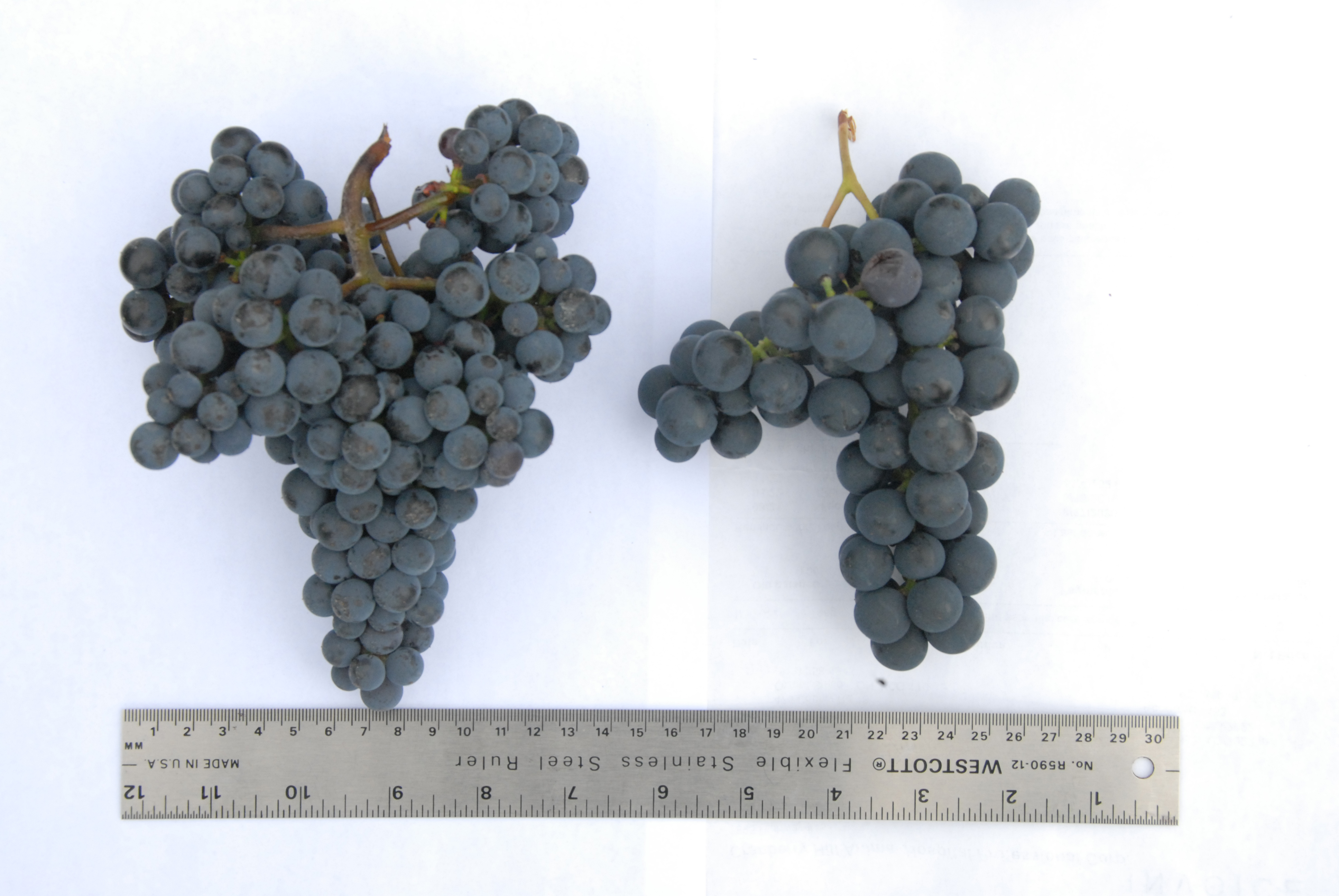TP 1-1-12
| Denomination: | 'TP 1-1-12' |
|---|---|
| Trade name: | Veritage |
| Botanical Name: | Vitis |
| Applicant/Holder: |
Plocher, Thomas Alan 9040 - 152nd Street N. Hugo, Minnesota 55038 United States of America |
| Breeder: |
Thomas Alan Plocher, Hugo, United States of America |
| Agent in Canada: |
Variety Rights Management 475 County Road 18 R.R. #2 Oxford Station, Ontario K0G 1T0 Canada Tel: 613-258-9015 |
| Application Date: | 2020-12-10 |
| Provisional Protection:: | 2020-12-10 |
| Application Number: | 20-10393 |
Variety Description
Variety used for comparison: 'Crimson Pearl'
Summary: The time of bud burst occurs mid to late season for 'TP 1-1-12' whereas it occurs late to very late for 'Crimson Pearl'. The young shoot tip of 'TP 1-1-12' is closed while that of 'Crimson Pearl' is slightly open. The lower side of the young leaf blade of 'TP 1-1-12' has sparse to medium dense erect hairs on the main veins whereas that of 'Crimson Pearl' has absent or very sparse erect hairs. The shoot of 'TP 1-1-12' has an erect to semi-erect attitude while that of 'Crimson Pearl' has a semi-erect to horizontal attitude. The mature leaf of 'TP 1-1-12' is medium to large and circular shaped while that of 'Crimson Pearl' is large to very large and pentagonal to circular shaped. The teeth of the mature leaf blade margin of 'TP 1-1-12' are short with a small length to width ratio whereas those of 'Crimson Pearly' are of medium length with a medium length to width ratio. The berries of 'TP 1-1-12' start to ripen mid to late season whereas the berries of 'Crimson Pearl' ripen late to very late in the season. 'TP 1-1-12' has a large to very large berry bunch size with small-sized berries whereas 'Crimson Pearl' has a medium to large bunch size with medium to large-sized berries. The fruit clusters of 'TP 1-1-12' develop two to four shoulders while those of 'Crimson Pearl' develop a single shoulder. The woody shoot of 'TP 1-1-12' is mainly orange to reddish brown while that of 'Crimson Pearl' is orange brown.
Description:
YOUNG SHOOT TIP: closed, absent or very sparse to sparse prostrate hairs, absent or very weak anthocyanin colouration of prostrate hairs, absent or very sparse erect hairs
SHOOT: erect to semi-erect attitude (before tying), dorsal side of internodes and nodes are green and red, ventral side of internodes and nodes are green, absent or very sparse erect hairs on internodes
WOODY SHOOTS: mid-season to late bud burst, orange to reddish brown
TENDRILS: medium length
YOUNG LEAF BLADE: yellow green upper side, absent or very sparse density of prostrate hairs between main veins on lower side, sparse to medium density of erect hairs on main veins on lower side
MATURE LEAF: medium to large blade, circular, absent or very weak blistering on upper side, three lobes, shallow upper lateral sinuses, open arrangement of lobes of upper lateral sinuses, arrangement of lobes of petiole sinus very wide open, petiole is moderately shorter than middle vein
MATURE LEAF (UPPER SIDE): absent or very low to low proportion of main veins with anthocyanin colouration
MATURE LEAF (LOWER SIDE): absent or very sparse prostrate hairs between main veins, absent or very sparse to sparse erect hairs on main veins
TEETH OF MATURE LEAF MARGIN: short, small length to width ratio, both sides straight
FLOWER: fully developed stamens and fully developed gynoecium
BERRY BUNCH: large to very large, very dense, medium to long peduncle of primary bunch, two to four shoulders
BERRY: begins ripening mid-season to late, small, globose shape, moderately easy to detach from pedicel, no particular flavour, complete seed formation
BERRY SKIN: blue black (without bloom), medium thickness
BERRY FLESH: absent or very weak anthocyanin colouration, moderately firm
Origin & Breeding History: 'TP 1-1-12' originated as a result of a controlled hybrid cross made in 1997 in Hugo, Minnesota, USA between 'Troubador', as the female parent, and an unnamed variety known as 'E.S. 5-4-16', as the male parent. Initial plant selections made in 2000 were based on winter hardiness, bud break timing and cluster size. 'TP 1-1-12' was selected in 2004 based on its fruit for the production of red wine.
Tests & Trials: The comparative trial for 'TP 1-1-12' was conducted at a production vineyard in Saint-Paul-D'Abbotsford, Quebec during the spring and fall of 2023. A total of ten vines per variety were planted in 12 metre long adjacent rows in 2016. The vines were spaced 1.5 metres apart within and between rows. The vines began producing fruit in 2018. Ten vines of each variety were examined.
Click on image for larger view

Grapevine: 'TP 1-1-12' (top) with reference variety 'Crimson Pearl' (bottom)
Click on image for larger view

Grapevine: 'TP 1-1-12' (left) with reference variety 'Crimson Pearl' (right)
- Date modified: